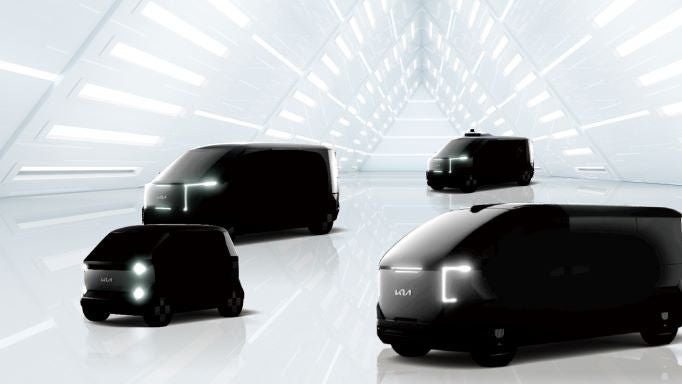
Kia held a groundbreaking ceremony today for its dedicated plant for the production of battery electric, purpose built vehicles (PBV).
The ceremony was at the Hwaseong plant, located in Gyeonggi Province, South Korea, and was attended by over 200 people, including government officials, Hyundai Motor Group executive chair Euisun Chung, Kia global president and CEO Ho Sung Song, and others from HMG and suppliers.
Kia will invest around a trillion won (US$758million) to secure 99,000 acres of land with the company planning to start mass production in the second half of 2025. It plans to produce 150,000 units in the first full year with potential to expand.
The new PBV plant will be built as an eco-friendly plant minimising carbon emissions and will also seek efficiency and intelligence with Hyundai Motor and Kia’s smart factory brand ‘E-Forest technology such as digital manufacturing systems.
One of the innovative manufacturing processes to be implemented at the new PBV plant is known as the ‘cellular (or cell) method’ which allows vehicle production based on diverse customer demands.
The method is a process layout strategy that groups together machines or workstations that are used to produce similar products or parts. The goal of the cell method is to create a more efficient and flexible manufacturing process by reducing the distance that materials and products need to travel during production. Under the cell method, machines are arranged in a way that optimises the flow of materials and products between workstations, with the aim of minimising downtime, reducing costs and increasing productivity.
How well do you really know your competitors?
Access the most comprehensive Company Profiles on the market, powered by GlobalData. Save hours of research. Gain competitive edge.

Thank you!
Your download email will arrive shortly
Not ready to buy yet? Download a free sample
We are confident about the unique quality of our Company Profiles. However, we want you to make the most beneficial decision for your business, so we offer a free sample that you can download by submitting the below form
By GlobalDataThe PBV plant’s manufacturing system unifies the new cell method with the original mass production conveyor system to allow flexible production with more customisation of various product types.
The plant will operate a dry booth during the painting process of vehicle manufacturing, reduce carbon emissions by about 20% by using natural light and streamlining the manufacturing process.
Kia will also apply innovative technology such as automation of facilities using machine learning and artificial intelligence (AI), automation of painting quality inspection under the vehicle, automation of installation of parts such as glass, vehicle name, and company logo, and real time automatic measurement quality data analysis to autonomously correct and install the vehicle body in real time.
The new facility will be a ‘human-friendly’ plant by pushing automation in heavy duty work and tasks that require looking up at the ceiling, while enhancing the feeling of ‘openness’ and also reducing noise levels.
Kia plans to show SW, the first model in the company’s dedicated PBV line, in 2025.
The model will be a mid-sized PBV and will be based on the eS platform, a dedicated skateboard platform for battery electric PBVs, enabling various types of vehicle bodies to be flexibly combined.
SW has been developed to respond to various business demands such as delivery, ride hailing, and business to business (B2B) transactions thanks to its excellent load structure and spacious indoor space that reaches the height of an adult.
After launching the mid-sized SW, Kia plans to expand its range to large PBVs which can be used for logistics, fresh food delivery, multi-seat shuttles, and mobile offices and stores as well as small PBVs and mid-sized robotaxis using autonomous driving technology.







